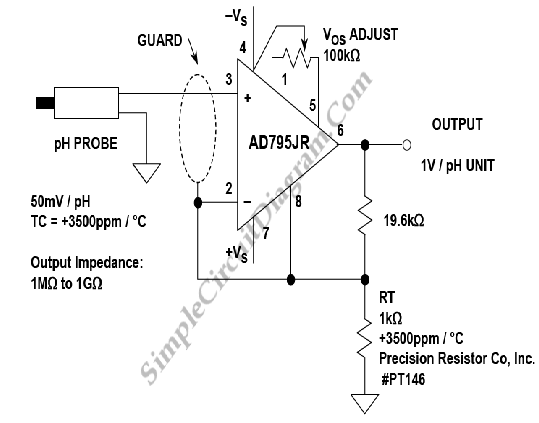A Ph Probe Buffer Amplifier
Buffer amplifier is required by a typical pH probe to isolate its 10^6 to 10^9 ohm source resistance from external circuitry. Such an amplifier is shown in the following figure.

The voltage error produced by the bias current and electrode resistance is minimized by the low input current of the AD795JR. To minimize leakage, we have to use guarding, shielding, high insulation resistance standoffs, and other such standard picoamp methods previously discussed. All of that is needed to maintain the circuit accuracy. The temperature coefficient of the slope of the PH probe transfer function, 50 mV per pH unit at room temperature, has approximately +3500ppm/’C. A gain of 20 is provided by the buffer amplifier shown on the figure below, and yields a final output voltage equal to 1 volt/pH unit. Resitor RT provide temperature compensation, which is a special temperature compensation resistor, 1Kohm, 1%, +3500ppm/’C, #PT146 available from Precision Resistor Co., Inc. [Source: Analog Devices]